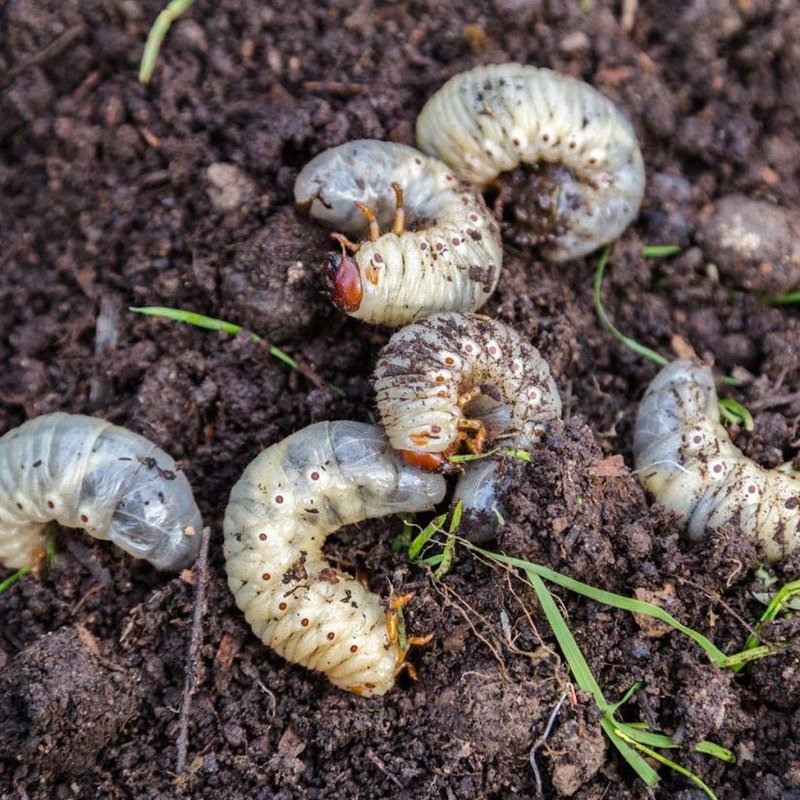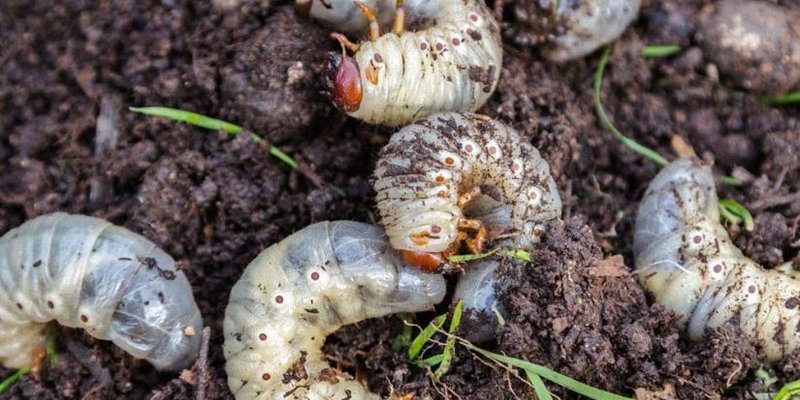
Imagine grub worms as sneaky little ninjas that creep through your soil, munching away at the roots of your grass. They’re the larval stage of various beetles, most commonly the Japanese beetle, and while they may be small, their appetite can lead to significant damage. So, will they return? Let’s dig in and find out how these pesky pests operate and whether we can expect to see them year after year.
What Are Grub Worms?
Grub worms are basically the juvenile stage of certain beetles—think of them as the “teenagers” in the insect world. They usually look like small, white or cream-colored C-shaped critters, often with a tiny brown head. If you take a closer look at your lawn, you might find them nestled in the soil, munching on grass roots and other organic materials.
These little guys are primarily the larvae of several types of beetles, including the Japanese beetle, European chafer, and June beetle. Each type has its own unique habits and life cycles, but all of them share the same basic love for snacking on grass roots. If you’ve ever pulled up a patch of grass and found soft roots or dead grass, chances are you’ve got a grub worm situation.
You might be wondering how long these grubs stick around. Well, that’s all tied up in their life cycle. Generally, they thrive in warmer months and tend to burrow deeper in the winter.
Do Grub Worms Come Back Every Year?
Now, onto the big question: do grub worms actually come back every year? The answer is a bit complex but boils down to their life cycle. Grub worms spend a significant portion of their life underground, feeding on roots, which means they can definitely make a return season after season if conditions are right.
Let’s break it down a bit:
1. **Life Cycle**: Grub worms typically emerge from their eggs in late spring to early summer. They start feeding on grass roots and live underground. By the time fall rolls around, they begin to burrow deeper into the soil for winter.
2. **Survival**: During winter, their dormant state allows them to survive the cold months. When spring returns, so do they! If they’ve found a comfy home in your lawn, they’ll start the cycle all over again.
3. **Seasonal Factors**: Weather plays a huge role in this. If the winter is mild, more grubs will survive. Conversely, if it’s extremely cold, some may not make it. So, yes, they can come back each year, but the numbers might vary based on environmental conditions.
It’s like an annual reunion—sometimes, there are more guests than others.
Signs of Grub Damage
If you’re worried about grub worms invading your lawn again, it helps to know what signs to look for. After all, spotting them early can save you a lot of hassle down the line.
Here are some telltale signs of grub damage:
- Brown patches: If you notice areas of grass turning brown or dying off, it could be a sign of grub activity.
- Soft soil: When you walk on your lawn, if it feels spongy or soft, it could mean the roots are being eaten away.
- Birds and animals: An uptick in birds or animals digging in your yard is often a signal that they’re hunting for those tasty grubs.
By keeping an eye out for these signs, you can catch your little lawn invaders before they spread too much damage.
How to Get Rid of Grub Worms
If you discover that grub worms have invaded your yard, don’t panic! There are several steps you can take to control their population. Here are some effective methods:
1. **Natural Predators**: Encourage wildlife that feasts on grubs, like birds or beneficial insects. You could even consider introducing nematodes—tiny worms that seek out and destroy grub larvae.
2. **Chemical Treatments**: If the infestation is severe, you might want to look into chemical pesticides specifically designed for grub control. Be sure to follow the instructions carefully and consider the impact on the surrounding ecosystem.
3. **Cultural Practices**: Improving overall lawn health can help combat grubs. Regularly aerate your lawn, maintain proper watering routines, and mow at the right height to promote strong grass roots.
It’s like prepping a fortress: a healthy lawn can protect itself against many pests, including grubs.
When Should You Treat for Grub Worms?
Timing is crucial when it comes to treating for grub worms. To be most effective, you want to target them when they’re active. This is usually in late spring or early summer as they hatch from their eggs.
Here’s a rough timeline:
– **Late Spring**: Keep an eye out for grubs hatching. This is when they start feeding aggressively.
– **Early Fall**: If you notice damage, fall is a good time to treat as they prepare for winter.
Applying treatments too early or too late might not yield the best results, so timing your approach is key.
Preventing Grub Worms
Preventing grub worms from taking over your lawn can save you a lot of trouble later. Here are a few strategies that can help keep these pests at bay:
1. **Healthy Lawn**: Focus on maintaining a healthy lawn. A well-fed and well-watered lawn can outcompete pests, making it less attractive for grubs.
2. **Regular Maintenance**: Aerate your lawn to improve drainage and root health. Also, consider overseeding to help fill in weak patches.
3. **Dethatching**: Too much thatch can foster a perfect environment for grubs. Regular dethatching can help keep your lawn healthy and less inviting to pests.
It’s like having a good defense: by creating an environment that’s less favorable for grubs, you may not have to deal with them as much each year.
So, do grub worms come back every year? The short answer is yes, they can, especially if conditions are right. Their life cycle allows them to survive the winter and rear their ugly heads again in spring, making it essential for homeowners to stay vigilant. Keeping an eye out for signs of damage and implementing preventative measures can go a long way in maintaining a healthy lawn.
Remember, maintaining a robust grass ecosystem is your best bet against these pesky intruders. And while grub worms can be a headache, understanding their habits and life cycle helps you take control and keep your yard looking vibrant. Here’s to a lush, healthy lawn free from those sneaky little grub invaders!

